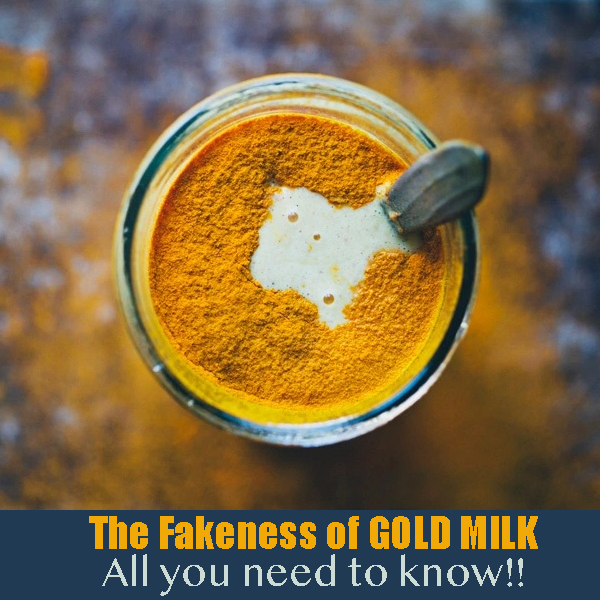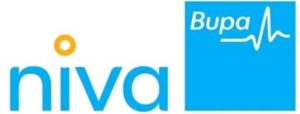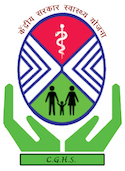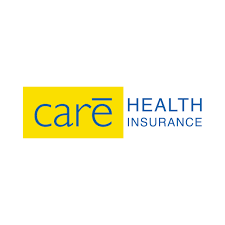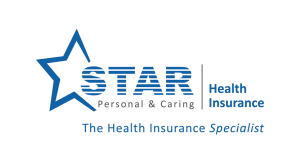Lowering Cholesterol: The Ayurvedic Way
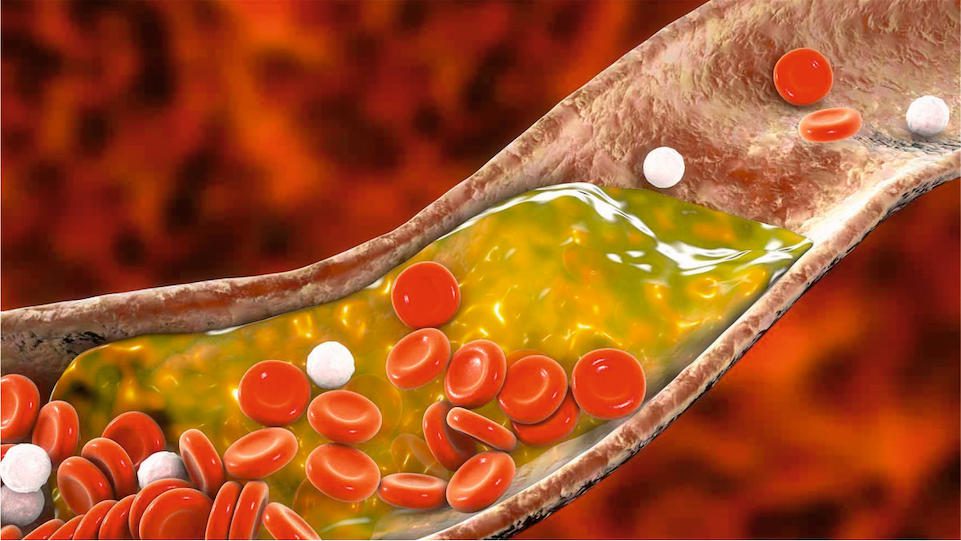
Dyslipidemia is a general term used to describe abnormal amounts of lipids (fats) in your blood. The most common type, high cholesterol, occurs when too much low-density lipoprotein (LDL) “bad” cholesterol and triglycerides are present in the body.
Another form- the metabolic syndrome. This occurs as a cluster of obesity, high blood pressure, elevated triglycerides, and insulin resistance. Metabolic syndrome significantly increases the risk of developing heart disease and type 2 diabetes.
The metabolic syndrome causes because of insulin resistance or “pre-diabetes”. Obesity and increased triglycerides and glucose intolerance are impacts of the metabolic syndrome. These all together increase the risk for developing type 2 diabetes, coronary artery disease (atherosclerosis) heart attack, or stroke. People who suffer from metabolic syndrome tend to have more belly fat than others. Leading scientists believe that it can be a new form of malnutrition. Which associates with inadequate consumption of essential fatty acids. Supplementing the diet with omega-3s can decrease body fat, cholesterol levels, and triglycerides.
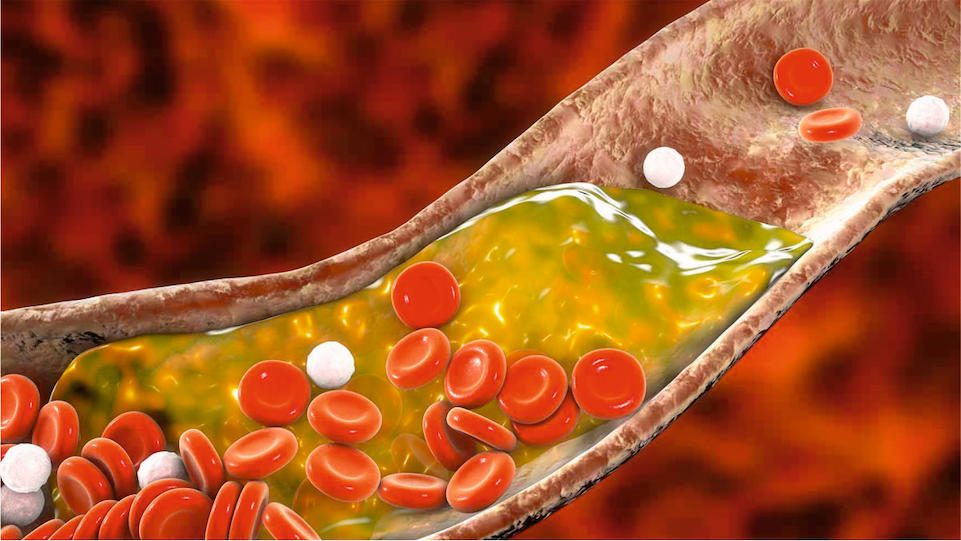
Can you live with Dyslipidemia?
Why is cholesterol so important? Cholesterol is a waxy substance. The liver produces this. This is present in every cell of your body.
Your cells use it to- build hormones, vitamin D, and substances that help you digest fat and absorb vitamins A, D, E, and K. It also helps make certain proteins for healthy skin and hair. You need some cholesterol to survive; it’s not all bad. But too much can be harmful. Specifically, these are of two types: High-Density Lipoprotein (HDL), the “good cholesterol” and Low-Density Lipoprotein (LDL), the “bad cholesterol.”
Too much LDL in your blood contributes to plaque buildup inside of arteries. This buildup increases your risk for a heart attack, stroke, or angina. When not enough blood can get to the heart. High levels of HDL-C protect against coronary artery disease.
Diabetes and Cholesterol?
It’s important to understand that there are 2 types of testing for cholesterol. One measures total cholesterol and one measures LDL and HDL separately, also called a lipid panel. A person can have high total cholesterol but normal levels of HDL and LDL. This shows- not be at an increased risk for cardiovascular disease. The ratios between the different lipoproteins are more important than the total cholesterol level.
The goal is to lower your LDL levels below 100 and increase HDL to at least 50. If you have or are at an increased risk for cardiovascular disease (CVD) you may need even lower numbers. Possible causes of dyslipidemia include: genetics, diabetes, smoking, high blood pressure, family history of CVD, and abdominal obesity
(excess body fat around the waistline). Dyslipidemia can run in families. If a parent has it you could too. If both parents have it then you’re likely to develop it too. A sedentary lifestyle with excess weight gain increases your chances of developing dyslipidemia. This might result in CAD and other deadly conditions.
How common is dyslipidemia?
Dyslipidemia is extremely common. In fact, it affects the majority of Americans over 40 years old and nearly 100 million people worldwide. Over half of all cases are undiagnosed and untreated due to a lack of awareness about symptoms or problems caused by severe disease. Some risk factors that lead to dyslipidemia include genetic predisposition, age, gender, overweight condition (BMI >25), low physical activity levels, and lifestyle behaviors like smoking or eating poorly (e.g., high caloric intake). Family members can also have an impact on your health if they tend toward unhealthy habits such as these.
What are the different types of Lipids in the human body?
Lipids are one of the three main classes of biomolecules that include fats, steroids, and phospholipids. Lipids have several roles to play in the body such as providing a source of energy; they can act like hormones (chemical messengers) and they also form an integral structural component of cell membranes.
The most common lipids found in our bodies are:
Triglycerides –
produced by the liver from fatty acids. Some triglycerides stores within fat cells while some circulate in the blood. Triglycerides provide quick access to energy and contribute to cholesterol levels.
Monoglycerides –
This type of fat is present in smaller quantities than triglycerides. Monoglycerides digest more quickly than triglycerides in the body. And are therefore help to improve the absorption of minerals.
Phospholipids –
These are a group of compounds, that derive from glycerol. This includes lecithin found in our cell membranes and nerve tissue, as well as organelles such as lysosomes and sphingosine.
Steroids –
hormones such as estrogen, testosterone, cortisone and steroids present within the bile acids. These lipids also act like detergents to emulsify fats and helps food move through the gastrointestinal tract. Animal fats contain cholesterol.
Cholesterol –
present in animal-based foods such as meat, eggs, and dairy products, cholesterol is used to produce steroid hormones (such as testosterone). It’s also a major component of cell membranes and the retina of our eyes. The body produces all it needs but we can still eat low-fat dairy products or take a daily supplement to get enough .
Different Types of Cholesterol
The human body has different types of Cholesterols, here are these-
High-Density Lipoprotein (HDL) –
This is also known as good cholesterol, HDL transports cholesterol from the blood and liver to cells. It’s considered healthy if it constitutes at least 40 percent of your total blood cholesterol levels. Some foods that help increase HDL levels include olive oil, oats, flaxseeds, and sea vegetables such as kelp. Do not confuse “good” with “bad.” Just because LDL is associated with heart disease doesn’t mean that HDL isn’t important for overall health.
Low-Density Lipoprotein (LDL) –
You don’t want this one in excess either since LDL carries many dietary fats into your bloodstream where they can clog the arteries leading to a heart attack or stroke. Foods that help lower LDL levels include vegetable oils, flaxseeds, eggs, and oats. Also, you can exercise more. In some cases, people with high LDL may need certain medications to bring it down successfully.
Very Low-Density Lipoprotein (VLDL) –
Like LDL, VLDL transports fats into the bloodstream from the liver and intestines. But it differs in that it carries triglycerides as well as cholesterol. VLDL generally rises when insulin levels are too high in the body. So try to keep your blood sugar levels under control by eating a low-glycemic diet. And obviously, manage stress through regular relaxation or meditation
Chylomicrons –
these carry lipids from your intestine to your muscles and organs for the delivery of energy. They’re one of the largest particles circulating in your bloodstream.
Lecithin –
found in eggs, soybeans, and fish, lecithin functions as an emulsifier – helping fats to mix with water so that your body can more easily digest them. It’s also used to make phospholipids such as sphingomyelin which is important for healthy cell membranes.
Different Types of Fatty Acids
Fatty acids are classified into many different types. Different types of fatty acids have different effects on health depending on the amount consumed and how they affect the body’s metabolism profile:
Saturated fat –
this type of fat is solid at room temperature (much like butter). It’s associated with high levels of cholesterol and may increase the risk of heart disease. Sources include animal fat, dairy products, palm oil, and coconut.
Most saturated fats are solid at room temperature but some (such as stearic acid) are liquid at room temperature.
Polyunsaturated fat –
this type is liquid not just at room temperature but also in your body (it is easily digested). Sources include corn, soybean, canola, and sunflower oils or foods that contain them such as salmon, walnuts, flaxseeds, and chia seeds. Polyunsaturated fats also help protect against heart disease by lowering blood pressure, inhibiting clot formation in the arteries, and boosting levels of HDL (good) cholesterol. In general, there are two types of polyunsaturated fats in food.
What are the causes of dyslipidemia?
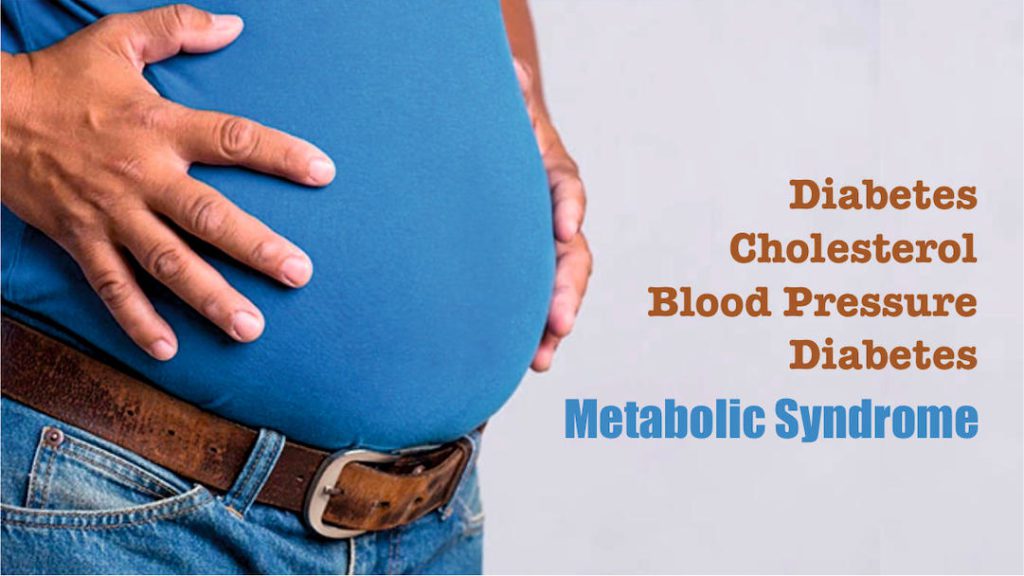
Genetics –
Some people inherit a tendency to develop high levels of LDL or triglycerides which increase their risk for developing heart disease. In some families, more than one person has been diagnosed with hyperlipidemia and/or coronary artery disease (CAD). Other family members might have normal lipid levels but are at increased risk because they have other cardiovascular disease risk factors such as diabetes or high blood pressure. Children who are overweight tend to have higher triglyceride levels in their blood. This condition is known as pediatric dyslipidemia.
Can you live with genetic problems
Dietary changes can affect your lipid profile. A diet that is lacking in fruits, vegetables, and whole grains may cause triglyceride levels to rise quickly depending on the quantity and type of fat consumed, how much alcohol is consumed, and excess weight.
Resting Heart Rate –
A person with a higher than normal resting heart rate may be at increased risk. The normal resting heart rate should be between 60 to 100 beats per minute. If your resting heart rate is less than 60 or more than 100, consult your physician for proper testing. Exercise can reduce the risk of sudden death by as much as 30 percent in people who have coronary artery disease, presumably because it lowers stress on the heart after a workout.
BMI –
People who are overweight or obese tend to have larger amounts of visceral fat (fat inside their abdomen) which increases the number of fatty acids entering the liver from both diet and storage depots within the body Excess body weight also leads to a higher level of insulin circulating in the system, which can cause both triglyceride and cholesterol levels to go up.
Fat storing –
People who tend to store fat on their abdomen (apple-shaped) have a greater risk for developing dyslipidemia compared to people who carry excess weight around their hips (pear-shaped). There is some evidence that abdominal fat, especially when it surrounds the liver, produces more fatty acids that contribute to atherosclerosis. Insulin resistance – Research shows that as people age they become less sensitive to insulin which increases the production of free fatty acids from adipose tissue. Some studies show there’s an association between high fasting glucose levels (hyperglycemia) elevated blood triglyceride levels, high blood pressure, and increased risk of atherosclerosis in the coronary arteries.
Smoking –
There is strong evidence that smoking increases the risk of developing cardiovascular disease. The components in cigarette smoke contribute to plaque buildup on artery walls and could trigger heart attacks and strokes. Nicotine also contributes significantly to elevated LDL cholesterol. As well as increasing the activity of free radical damage mechanisms links with inflammation, oxidative stress, and increased cellular mutation. There is a strong correlation between active smokers (those who have smoked in the past 30 days) compared to those who have never smoked or are former smokers. But just because they’re not actively smoking doesn’t mean they don’t still carry some risks from tobacco use such as second-hand smoke, and the residual nicotine in their body.
Smoking is a strong independent predictor of the risk for developing coronary artery disease (CAD). Smokers have twice as much plaque in their arteries as nonsmokers. Smoking also contributes to the thickening of carotid intima-media thickness, which increases the risk for stroke. As many as 50 percent of people who regularly smoke will die from smoking-related diseases
Obesity –
Excess weight can disrupt the balance between triglyceride and HDL cholesterol levels in ways that could increase your chance of heart disease. The greater your percentage of body fat, the more you are at risk. Being overweight often leads to high blood pressure, diabetes mellitus, elevated fasting glucose levels, and high triglyceride levels. In addition, it can cause changes in cholesterol and other blood fats that increase your risk for heart disease.
What are the symptoms of Dyslipidemia?
Symptoms of dyslipidemia are not always present and may include:
Easy bruising or bleeding, nosebleeds that last longer than usual, or gums that bleed when you floss.
If you notice any changes in your skin such as unexplained rashes, bumps under the skin (especially on the abdomen), discoloration of the skin (such as yellowish discoloration around fingernails) around your eyes, lips, and genital area – see a physician immediately.
Severe headaches including migraines, unusual head pain, OR numbness in face or limbs. Symptoms that occur during rest can be an indicator of coronary heart disease.
Pain from poor circulation to extremities is common with aging and diabetes, but sharp/stabbing pain in the chest, left arm, or jaw can indicate CAD.
Shortness of breath during exercise, especially when associated with chest discomfort(pressure) or angina (the sensation of indigestion). If this occurs while you are at rest it could be a sign of COPD or Respiratory disease.
How does Dyslipidemia cause cardiovascular disease?
If the body is not properly monitoring and regulating blood flow in the arteries, the heart will be burdened with an increased workload which can cause it to enlarge. In time, this causes ventricular dysfunction which could lead to symptoms of coronary artery disease (CAD), congestive heart failure, or sudden cardiac arrest.
Vascular smooth muscle cells are like a garden hose. The more you turn on the water, the bigger it gets. If we look at men as an example, if there’s increased activity of free radical damage mechanisms known to be associated with inflammation, oxidative stress, then cellular mutation results in stiffening of the vascular smooth muscles causing arterial stiffness. Arterial stiffness sets up conditions for high blood pressure aneurysms and increases the risk for stroke.
How does dyslipidemia cause hypertension?
The increased activity of free radical damage mechanisms known to be associated with inflammation, oxidative stress, and cellular mutation increase vascular smooth muscle cell production to keep up with increases in blood flow. The result is that the inside diameter of your arteries gets bigger (hypertrophy) which is what happens to your garden hose when you leave it out in the sun. This puts pressure on the walls of your arteries forcing them to stiffen(atherosclerosis). Once this happens, the heart must work harder because there’s less space for blood flow through narrowed vessels increasing blood pressure.
For your heart to keep up with the increased workload, it has to beat faster and harder. The increase in blood pressure then leads to chronic high blood pressure or hypertension.
What does Ayurveda say about dyslipidemia?
Ayurveda suggests that dyslipidemia is because of imbalance of the three doshas. The most important dosha in this situation is Vata.
Vata governs circulation, blood flow, and movement through space and time. It also rules carbohydrates which are the body’s preferred fuel source. As well as cholesterol levels because it converts food to energy via natural oxidation reactions including metabolism in the liver.
Because of these two properties, we have found that many people intuitively try to reduce their carbohydrate intake when they feel like they may be at risk for dyslipidemia, or simply want to lose weight without going on a “diet.”
The problem with this approach is that our bodies naturally crave carbs especially when it senses that the other macros are becoming imbalanced. The most important thing to do then when you’re at risk for dyslipidemia is to move whenever possible so a buildup of data does not occur which is what leads to inflammation, oxidation, and cellular mutation causing vascular smooth muscle cells to expand in response.
The last property of Vata that needs attention is its association with blood flow. Because if there’s no circulation (increased activity of free radical damage mechanisms known to be associated with inflammation) there’s not enough room for the nitric oxide required for vasodilation in the arteries.
How does Ayurveda cure dyslipidemia?
Imbalances in doshas are treated nutritionally through a process called panchakarma. Ayurveda makes five recommendations for dyslipidemia through panchakarma.
1) Reduce the intake of salt & sugar
2) Increase physical activity
3) Take herbal medicines for cholesterol management
4) Eat a diet of 50% carbohydrates, 25-35% protein, and 15-20% fat
5) Get proper sleep
Ayurvedic medicine is very structured in how it delivers health recommendations. It tells you exactly how to do something while making sure that you take your time in doing so which results in long-lasting results.
Reduce the intake of salt & sugar
The first step helps to reduce the intake of salt and sugar. Because they’re two things we’ve become addicted to since their overuse was found to control variables such as taste and texture which are important when eating rice or other grains. Through this process, Ayurveda found that salt and sugar can cause dyslipidemia.
Increase physical activity
The second step is to increase physical activity as a way to burn off the extra fat, reduce blood pressure, improve circulation, and manage glucose (sugar) levels.
Ayurveda says don’t change anything else until you’ve done these two things first because they are the most important steps for treating dyslipidemia in Ayurveda.
Take herbal medicines for cholesterol management
The third step is taking herbal medicines designated for cholesterol management. Without proper knowledge of how different herbs work with each other or how long they take to become effective, it’s best not to take any herbal medicines at this point.
Balanced Diet
The fourth step should only be taken after you have followed the steps above. It suggests that you eat a diet of 50% carbohydrates, 25-35% protein, and 15-20% fat. After following the steps above for at least two months you can start to add more carbs by increasing the portion sizes while still keeping your total calories around 3200 kcal per day. The most important thing is that you don’t go over this limit because it’s what leads to obesity which is linked with diabetes and dyslipidemia in all three doshas.
Keep a food journal detailing everything you eat (including time & location), all medicines or supplements taken, as well as your daily activities such as how much sleep did you get? What were your moods like today? etc…
Know about the Diet for cardiac diseases
Proper Sleep
The fifth step is to get proper sleep. Not getting enough sleep is linked to accelerated free radical damage mechanisms in the body causing inflammation and oxidation which are two properties of all doshas that lead to cellular mutation.
This is Ayurveda’s approach towards reducing the risk for dyslipidemia through natural medicine without resorting to pharmaceuticals.
Ayurveda recommends eating a diet moderate in carbohydrates, low in fat and salt with plenty of exercises,s and good sleep every night. There are no foods or herbs that need to avoid. While following this protocol because both times (which is necessary for complete digestion). As well as an emphasis on individualizing your diet so it fits your needs. These are more important than any specific diet plan you may try to follow.
Ayurveda’s approach towards the treatment of dyslipidemia is simple and it doesn’t require taking any expensive medications or altering your diet in any way… it just requires you to make the right decision on which lifestyle changes are best for you and your health so that you can avoid all the pitfalls of modern medicine.
Ayurvedic herbs that lower down the Cholesterol?
Ayurveda is a holistic form of medicine that addresses all the seven layers of our being, these include Rasa (taste), Rakta (blood), Mamsa (flesh), Medas (oils/body fat), Asthi (bones), and Majja/Shukra ( in men, ovum in women). It further categorizes them into Vata dosha, Pitta dosha, and Kapha dosha. A healthy lifestyle according to Ayurveda includes having an appropriate balance among the three doshas.
The key to maintaining a good gut flora lies in ensuring a correct diet. You should eat food that is light on digestion such as fresh vegetables and avoid high protein or fatty food which requires a higher level of digestive enzymes. Also, you must have a balanced meal every day including fresh fruits and vegetables, whole grains, homemade yogurt/milk, etc.
As far as herbal preparations are concerned, they play an important role in the treatment of dyslipidemia disease by providing many useful pharmacological effects which include hypotensive effect (relieving high blood pressure), antioxidant activity (destroying harmful oxygen-free radicals), anti-inflammatory properties, etc… Herbs like Shilajit, Ashwagandha, Turmeric, and Bael leaves can be very effective when it comes to reducing cholesterol levels.
Ayurvedic herb used in the treatment of dyslipidemia:
Shilajit is in use for more than fifteen hundred years old Indian herbal texts. It is a wonder herb and it contains many minerals which enhance cell metabolism and induce organ function, including a unique complex of humic acid which promotes detoxification and proper digestion.
Most importantly, shilajit has steroids like chemicals that boost immunity by increasing the number of CD8+ T cells (cytotoxic lymphocytes) from bone marrow–the first line of defense against invading microbes; steroid also stimulates the secretion of immunoglobulins (antibodies) from the liver. These antibodies are vital for fighting off infections, helping produce them indicates a healthy immune system.
In addition to it, shilajit also contains terpenoids and phenolic compounds which have anti-tumor/anti-cancer activity. In 2003, the U.S Food and Drug Administration approved a clinical trial regarding the role of these agents in cancer treatment. This herb is mainly responsible for controlling oxidative stress (free radicals) by promoting cellular antioxidant defense systems like GSH glutathione peroxidase; catalase, etc. Shilajit plays an important role in inhibiting LDL oxidation-free radical formation as well as preventing their apoptosis.
Bael leaves for lowering cholesterol:
Bael leaves is another amazingly effective herb that lowers down the serum lipid levels and increases HDL levels in the human body which help to maintain cardiovascular health by reducing plaque formation in blood vessels and also prevent strokes since it helps to remove unwanted substances from our body, thus decreasing the likelihood of developing atherosclerosis. Other than this, Bael leaves helps as a digestive tonic due to their anti-inflammatory properties. This further aid digestion and has been shown to be very useful in the treatment of dyslipidemia.
Don’t forget to read- 6 Natural ways and 4 steps to lower down cholesterol
Cardamom to control cholesterol:
Cardamom is another useful herb for reducing cholesterol levels; studies have shown that cardamom oil supplementation produces a considerable reduction in serum total lipids and lipid peroxides in human subjects due to its antioxidant potential, thus preventing cardiovascular disorder by dilating blood vessels. Moreover, several animal experiments revealed that cardamom supplements play a vital role in inhibiting pancreatic cancer cell growth through apoptosis.
Turmeric for high cholesterol:
Turmeric, also known as ginger root or Haldi is one of the world’s most popular spices that contains powerful nutrients such as flavonoids, minerals, and active anti-oxidants like curcumin which have antioxidant potential and help to protect your body from various chronic diseases due to its powerful anti-inflammatory properties. Haldi helps in treating various medical conditions such as diabetes, cholera, indigestion, constipation, etc… Turmeric supplements are also a very effective remedy for lowering cholesterol levels. Ashwagandha is one of my favorite herbs which helps to improve overall well-being by supporting immune system functions. It further promotes heart health by reducing triglycerides (fats) levels and increase HDL levels. Due to this property, it can be very useful when it comes to preventing cardiovascular disorders of high triglyceride.
Ashwagandha for high cholesterol:
Ashwagandha is a potent herb that is not only an excellent natural remedy for high cholesterol but is also effective in lowering blood sugar levels and maintaining a healthy weight by promoting metabolism. It also prevents the accumulation of fats by reducing bile secretion which in turn leads to less fat being digested [10]. Other than this, it also reduces anxiety and stress-related disorders like depression through its calming effect which further improves our quality of life.




